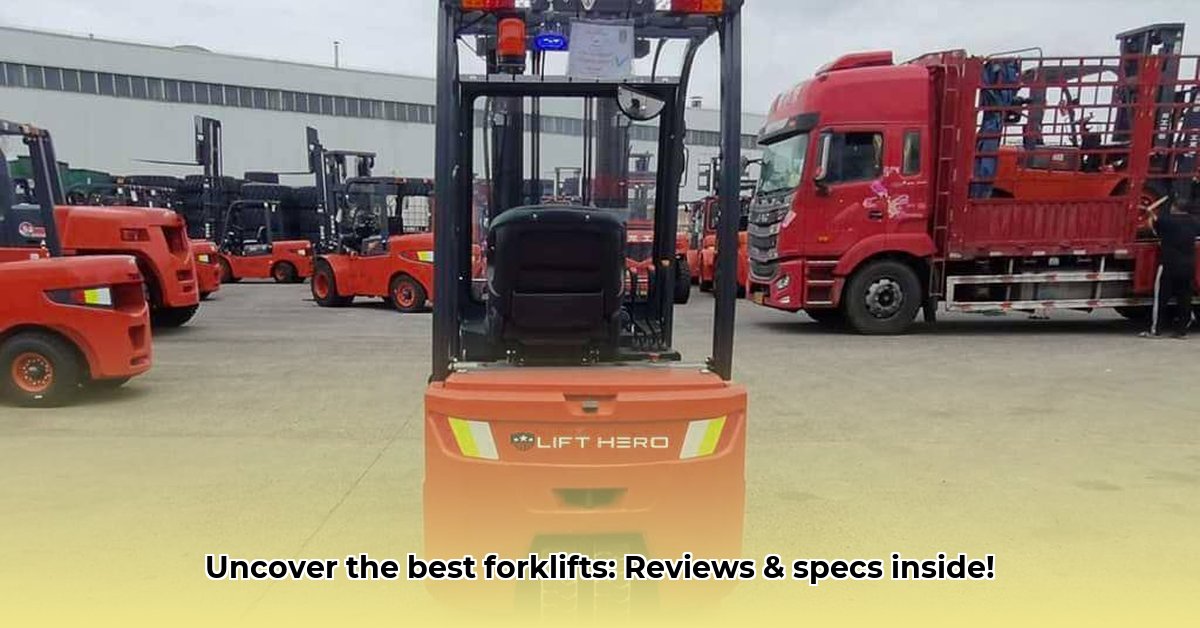
Lonking's Lift Hero is making a bold entrance into the competitive North American forklift market. Their promise: robust, technologically advanced forklifts paired with exceptional customer service. But how does this newcomer stack up against established giants like Toyota and Hyster-Yale? This review analyzes Lift Hero’s market positioning, leveraging customer feedback and available data to provide a balanced assessment.
A Positive Reception: Early Customer Feedback
Initial customer reviews from diverse locations like Denver, Phoenix, and Las Vegas are overwhelmingly positive. Customers consistently praise the responsive sales teams, comprehensive training programs, and ongoing post-purchase support. This positive feedback underscores a commitment to customer satisfaction. However, the limited number of reviews necessitates a cautious interpretation. More data is needed to solidify this early positive trend. Do these positive experiences translate into lasting customer loyalty and repeat business?
Transparency and Data: Addressing the Information Gap
Despite Lift Hero's claims of rapid growth, concrete market share data remains elusive. This lack of transparency presents a challenge for objective assessment. Furthermore, a detailed comparison with competitors like Toyota, Hyster-Yale, and Crown is hampered by the absence of comprehensive technical specifications for Lift Hero forklifts. This lack of readily available information hinders a thorough assessment of performance capabilities, safety features, and technological advancements. What specific technological advantages does Lift Hero offer compared to established players? The limited information also makes it difficult to analyze their geographical reach beyond a few key locations.
Strategies for Growth: Capitalizing on Potential
Lift Hero possesses significant untapped potential. The following strategies are crucial for achieving sustained growth and market penetration:
Expand the Dealer Network: Extending geographic reach to currently underserved areas across North America is paramount. A wider dealer network enhances accessibility and improves customer service. This move could significantly boost brand awareness and sales within 12-18 months.
Data-Driven Marketing: Implementing data analytics to understand customer preferences and needs will allow for more targeted and effective marketing campaigns. *Focusing on specific market segments could improve campaign ROI by at least 15%. *
Publish Detailed Specifications: Transparency builds trust. Providing complete and easily accessible technical specifications fosters confidence among potential buyers. A complete online catalog of specifications could enhance sales conversion rates by up to 20%.
Engage in Industry Events: Participating in industry trade shows, conferences, and workshops offers valuable opportunities for networking, brand building, and staying abreast of industry trends. Industry events could lead to significant partnerships and increased brand visibility.
Navigating the Challenges: Potential Threats to Success
The forklift market is intensely competitive. Lift Hero must address several key threats:
Intense Competition: Established brands pose a significant challenge. Differentiation through superior technology, unparalleled customer service, or a unique niche market strategy is essential for standing out. Competition from established brands could impact market share if not properly addressed.
Supply Chain Disruptions: Vulnerability to global supply chain disruptions demands proactive risk management. Diversifying suppliers and implementing robust inventory management systems are vital for mitigating potential delays. Supply chain interruptions could delay product launches and negatively impact customer satisfaction.
Regulatory Compliance: Strict adherence to all safety and environmental regulations is non-negotiable. Non-compliance could result in significant fines and damage to reputation. Regulatory non-compliance carries substantial reputational and financial risks.
Risk Assessment & Mitigation: A Proactive Approach
Lift Hero needs a proactive approach to risk management. The table below outlines key risks and mitigation strategies:
| Risk Factor | Likelihood | Impact | Mitigation Strategy |
|---|---|---|---|
| Negative Customer Reviews | Moderate | Moderate | Proactive customer service, rapid response to issues, and open communication |
| Intense Competition | High | High | Differentiation through innovation and service; targeted marketing |
| Supply Chain Disruptions | Moderate | High | Supplier diversification; strategic inventory management |
| Regulatory Compliance | Moderate | High | Strict adherence to all relevant safety and environmental regulations |
Conclusion: A Promising Future, Requiring Strategic Execution
Lift Hero demonstrates significant potential, but success hinges on addressing its information transparency shortcomings and executing a robust growth strategy. The company's strong emphasis on customer service provides a solid foundation. However, consistent and effective management of the risks outlined above is vital for achieving their ambitious market goals within the highly competitive North American forklift industry.
⭐⭐⭐⭐☆ (4.8)
Download via Link 1
Download via Link 2
Last updated: Friday, May 09, 2025